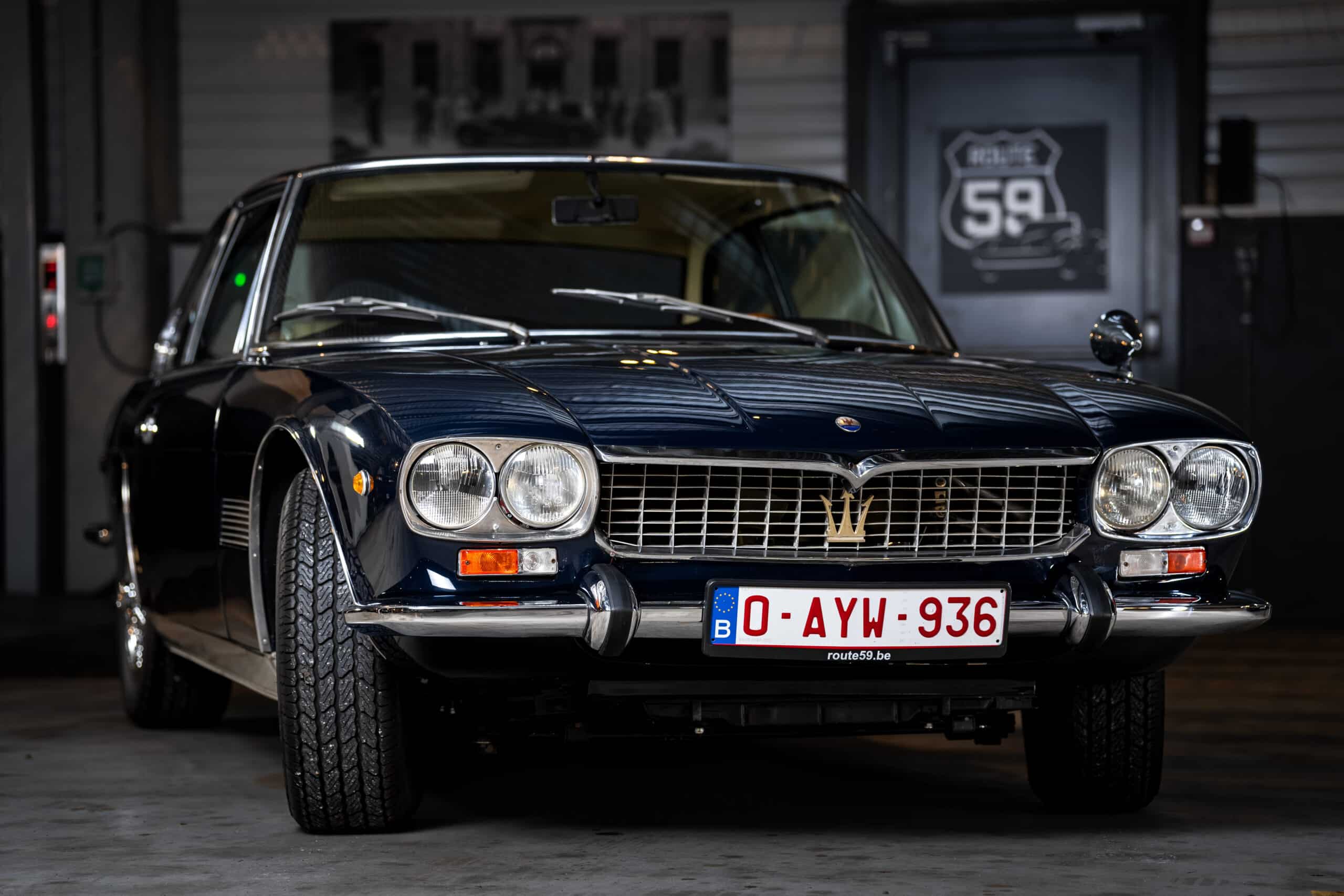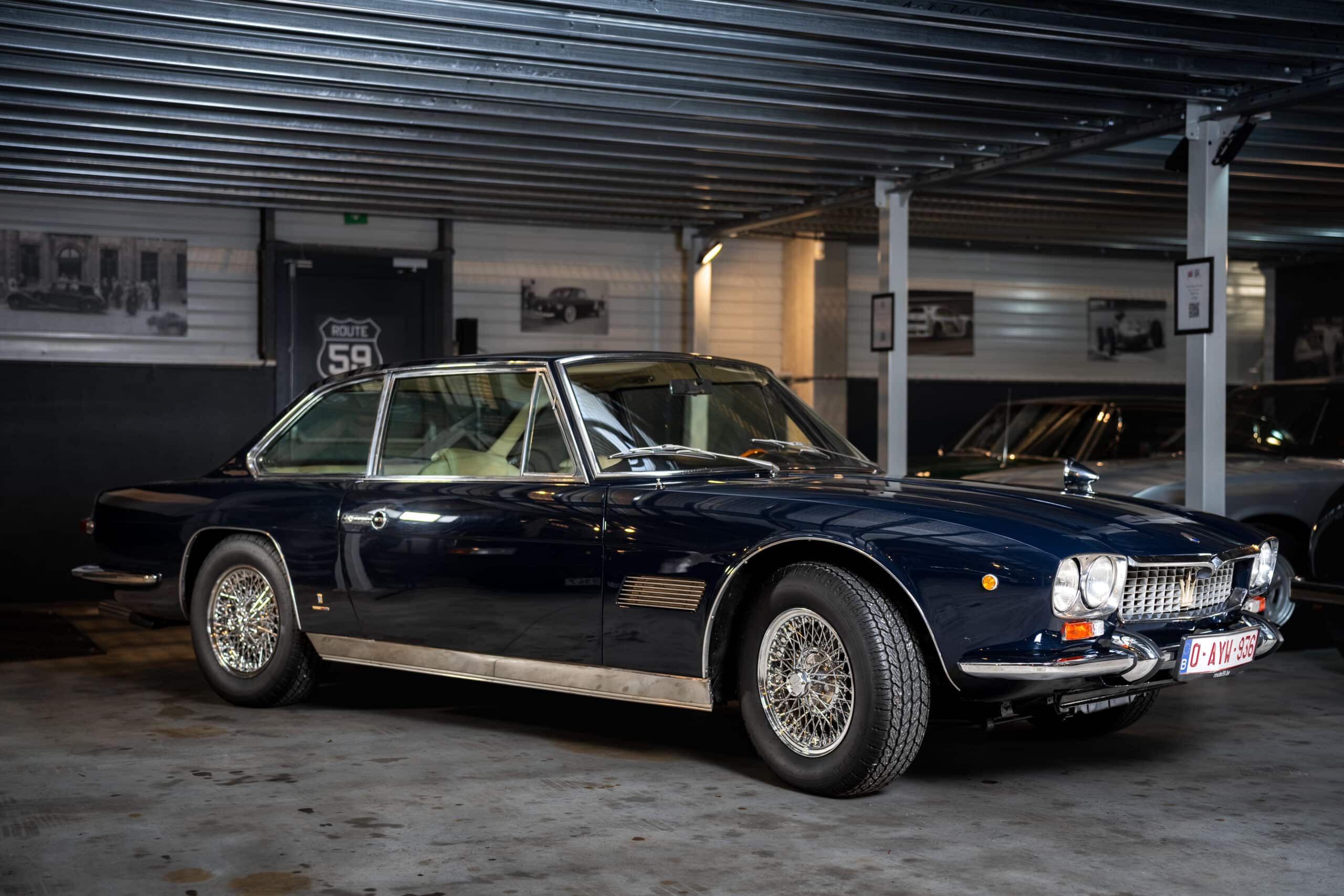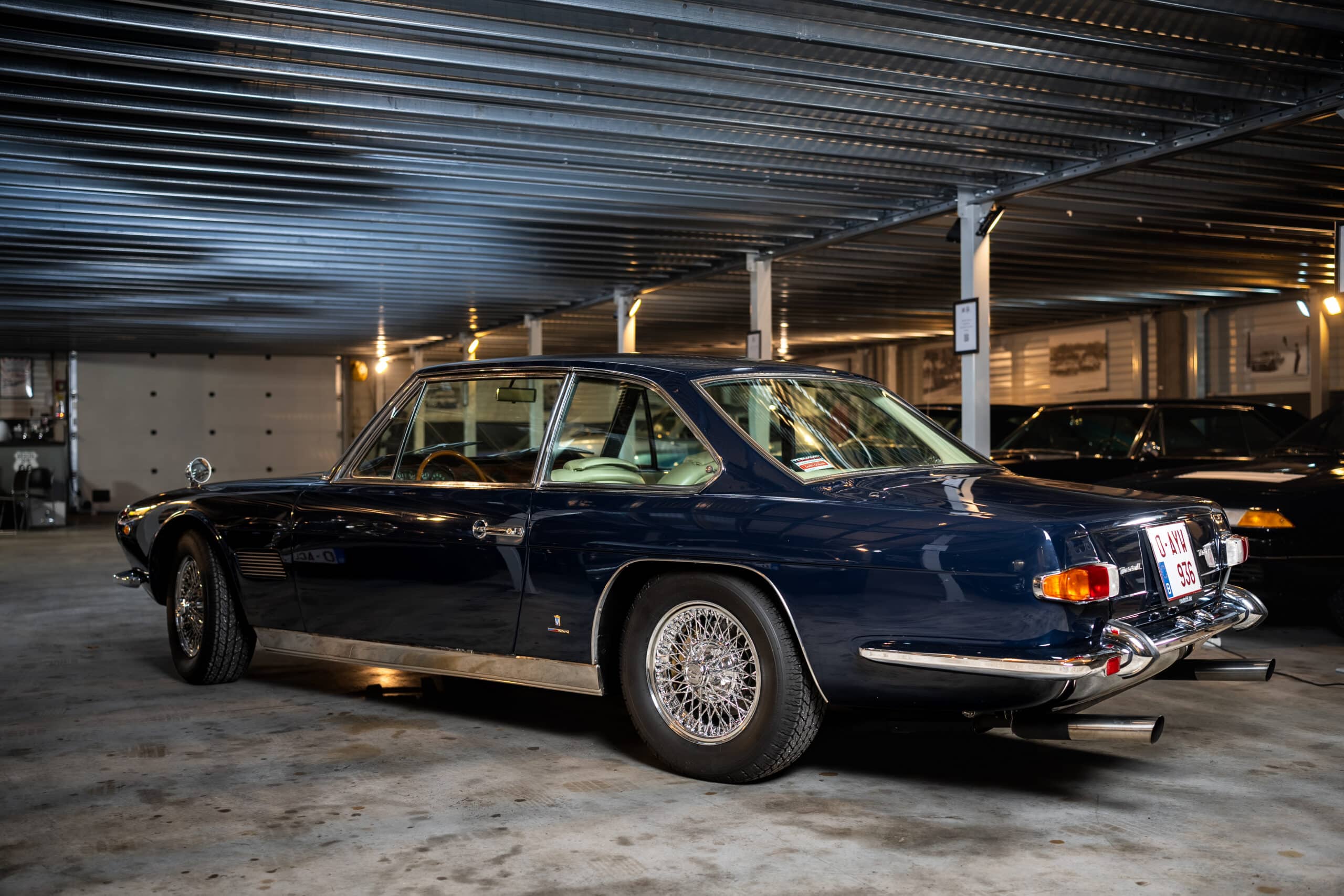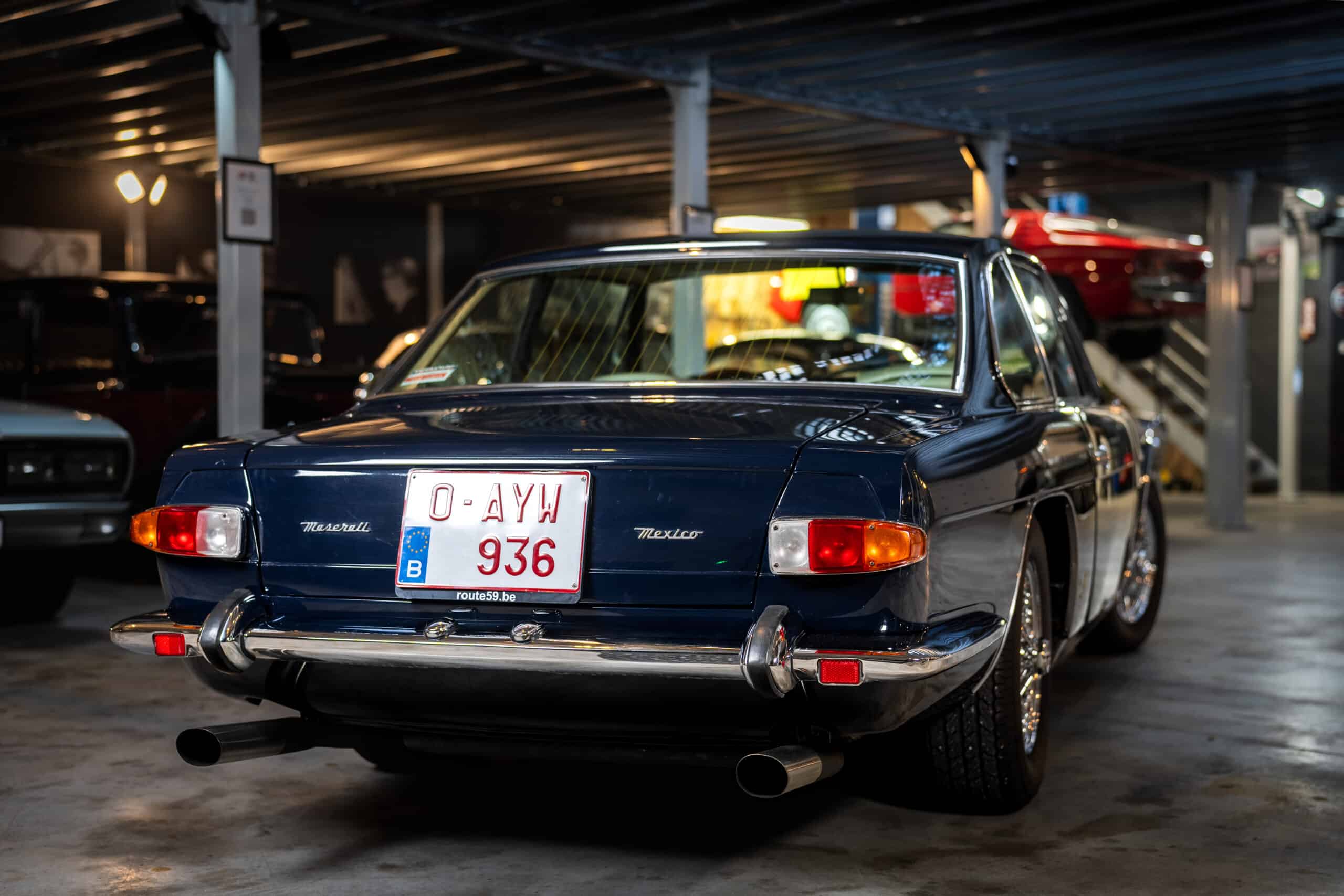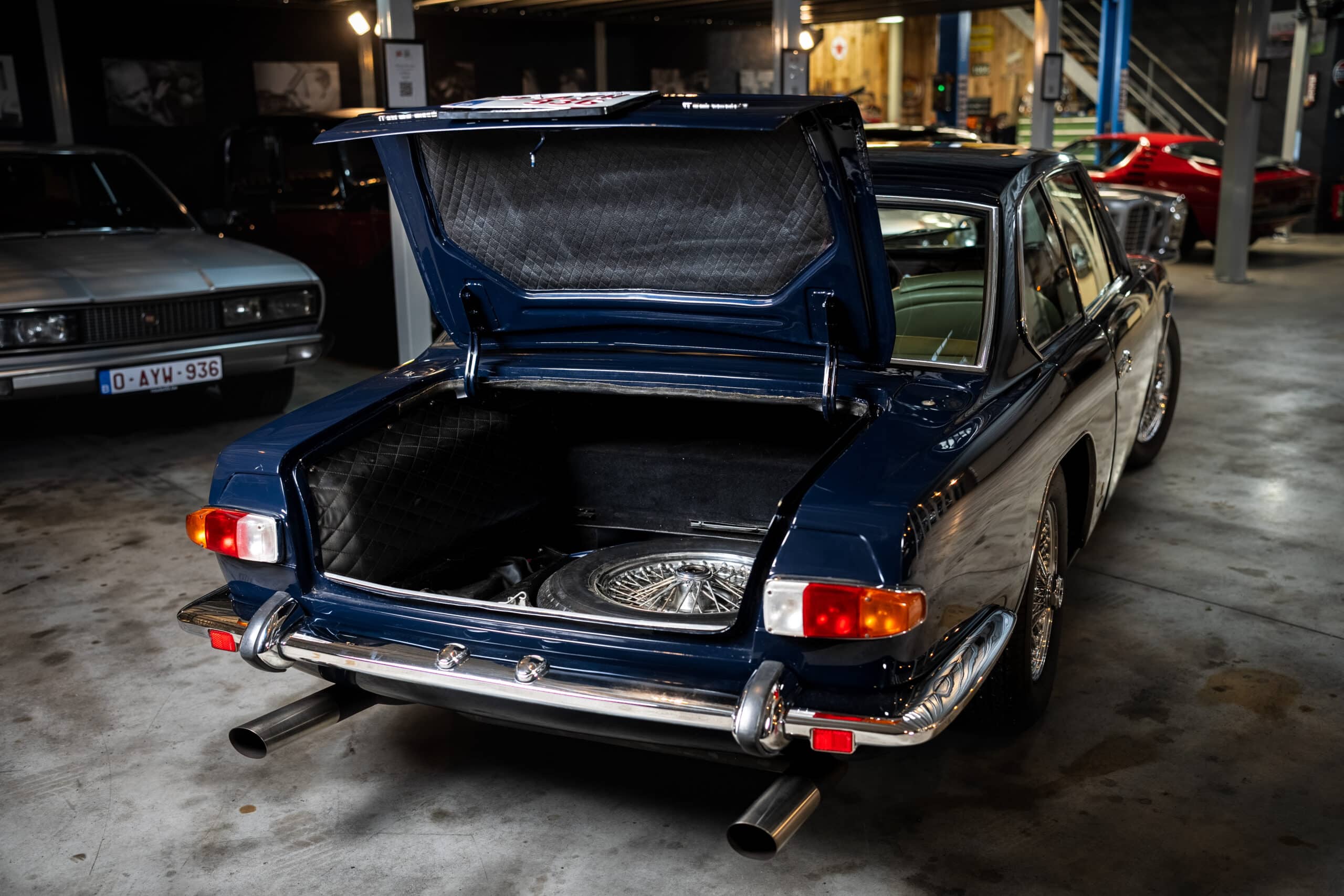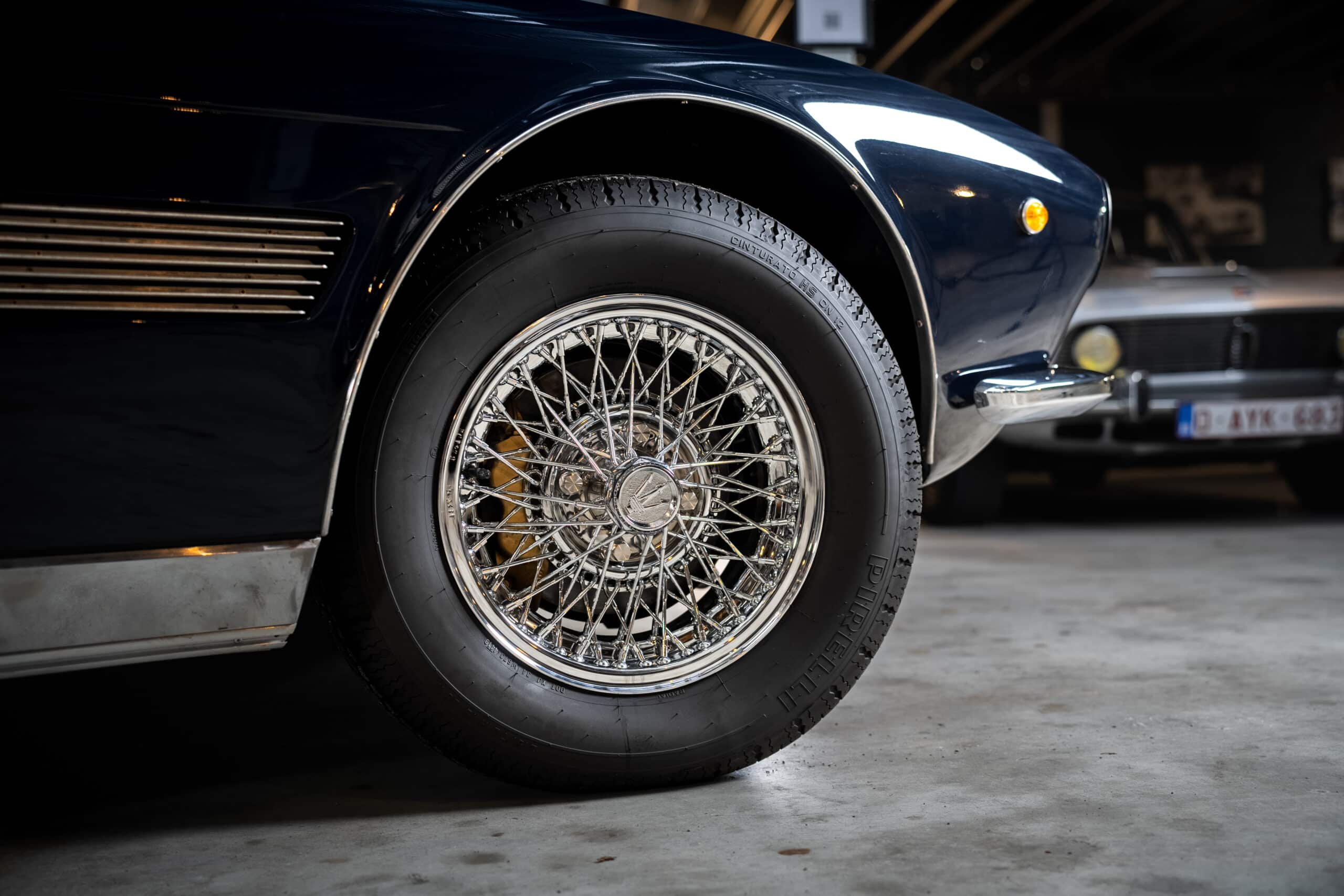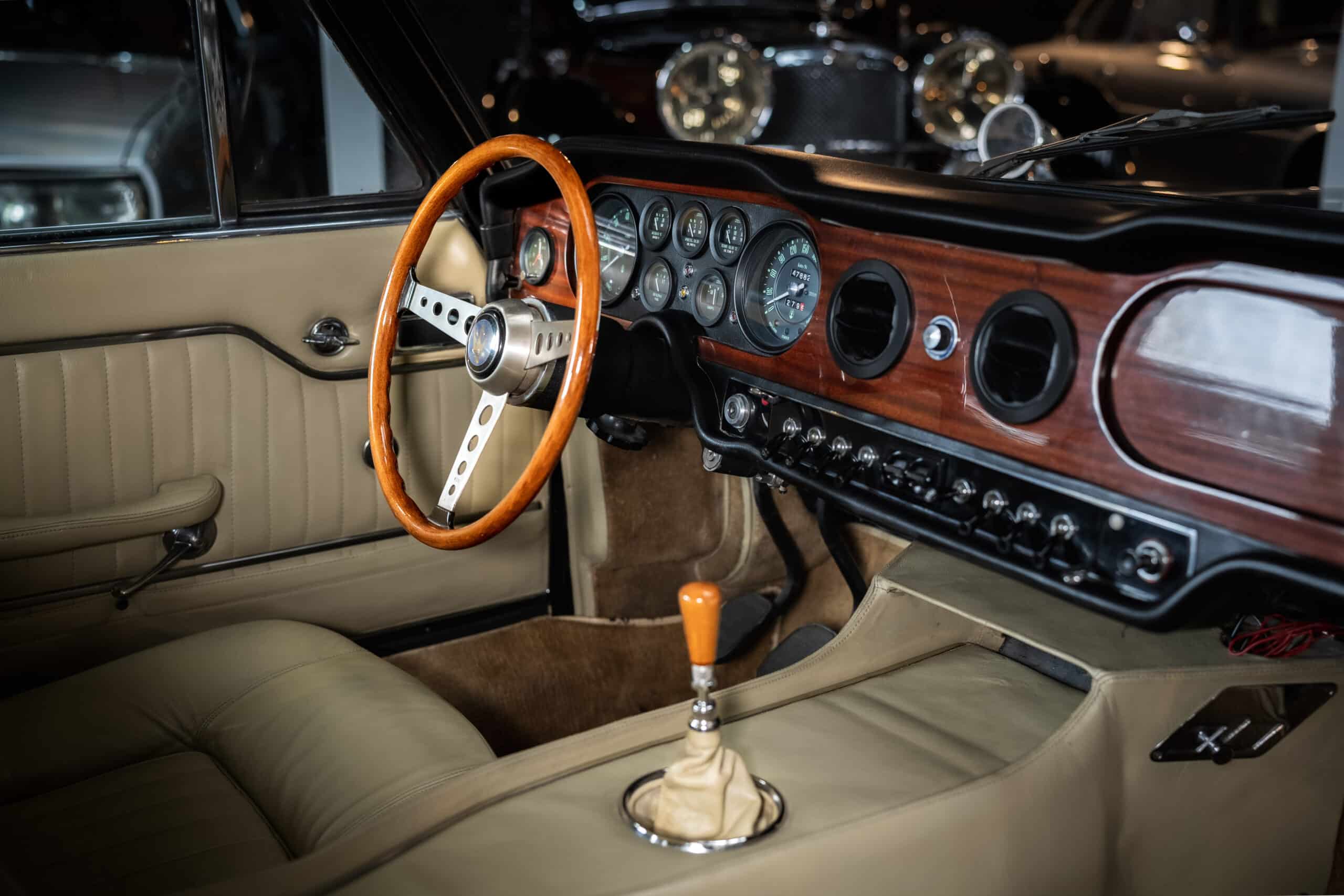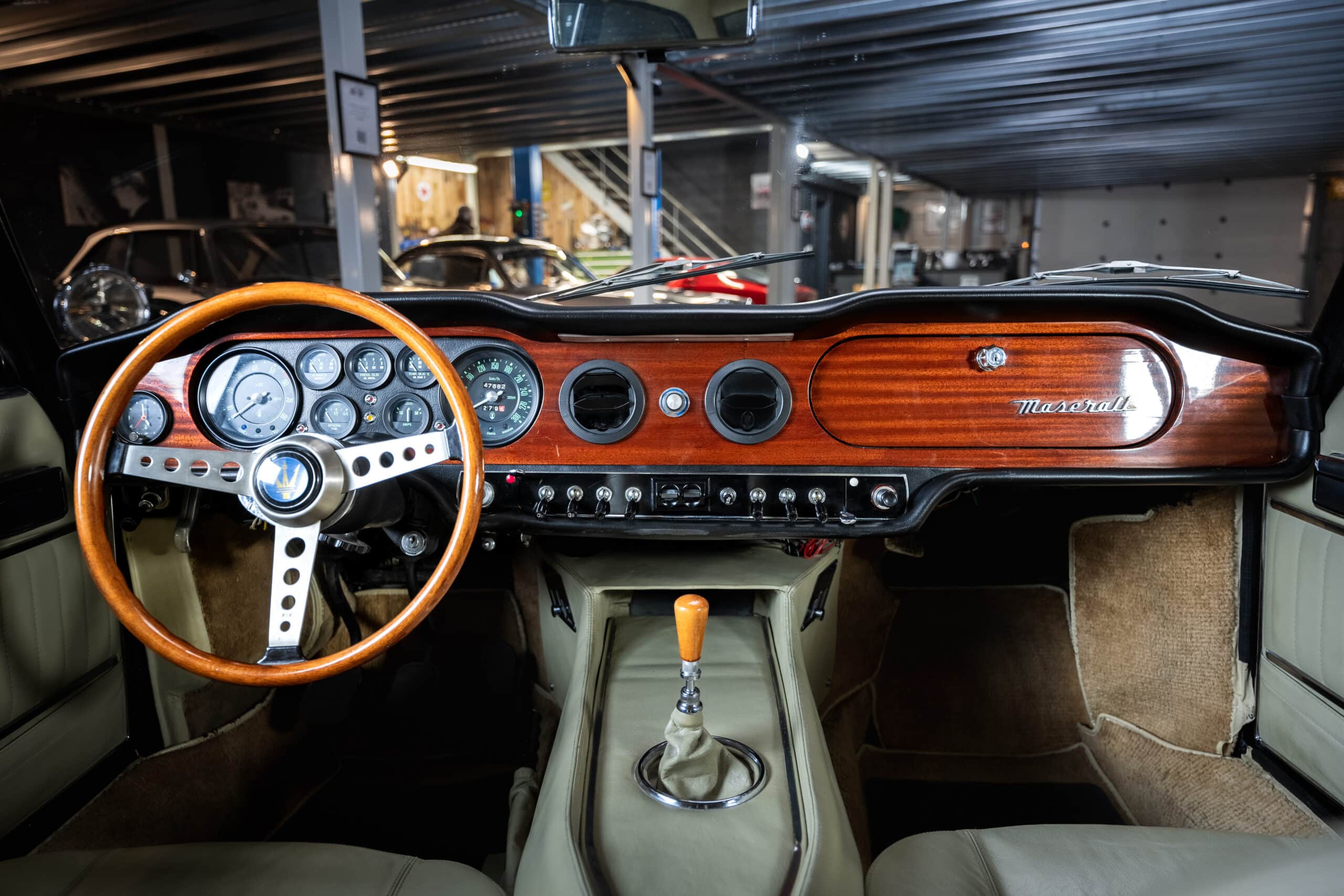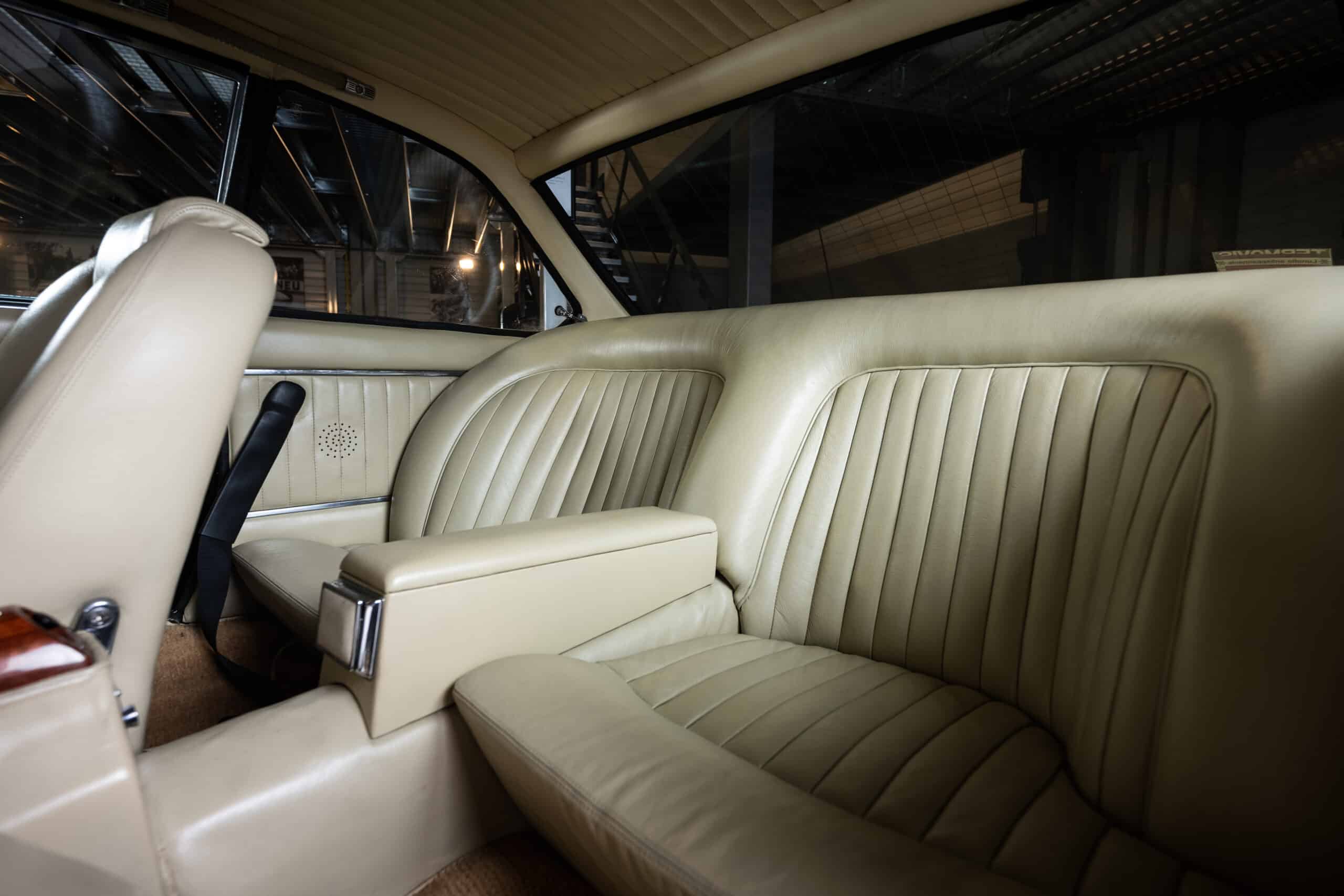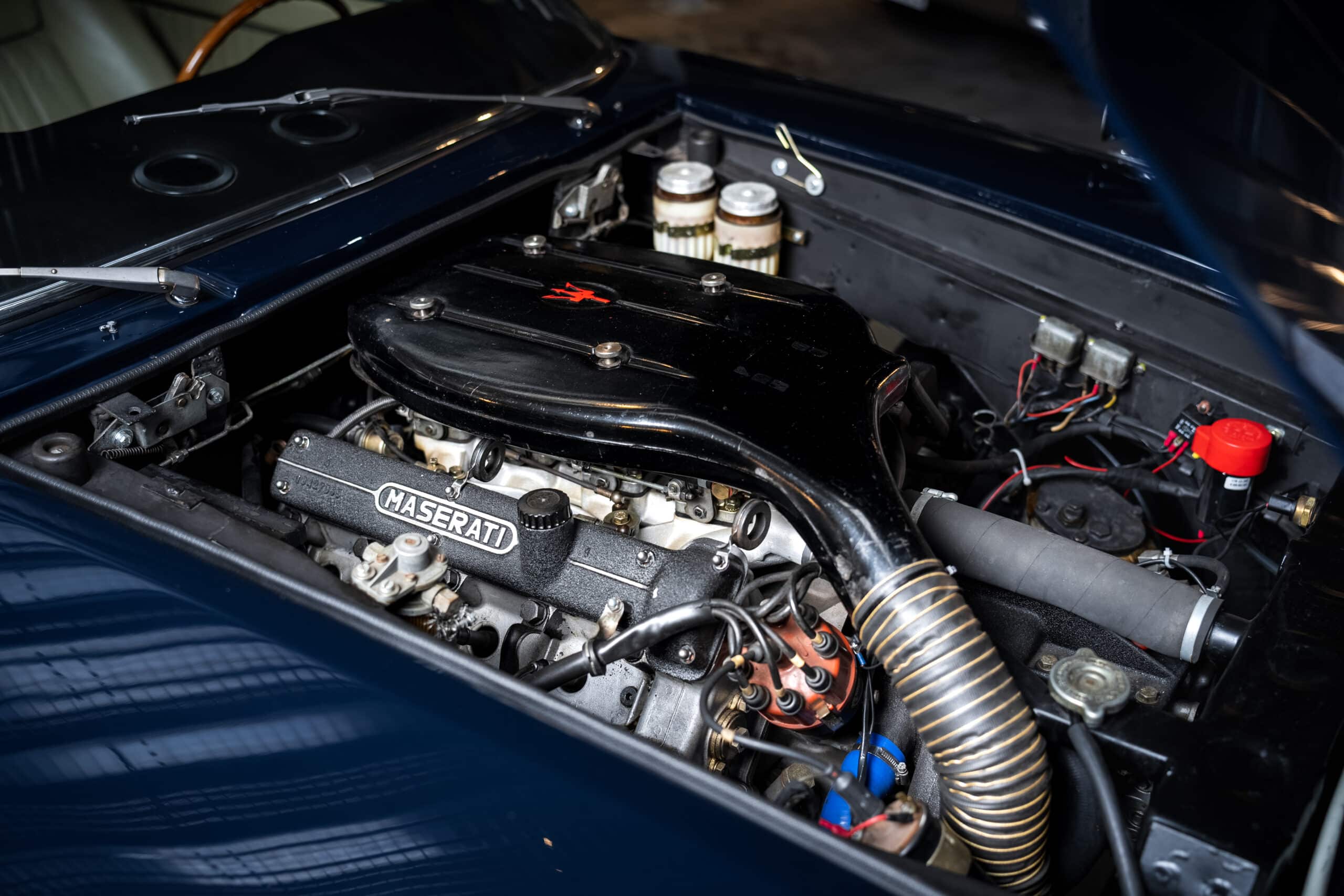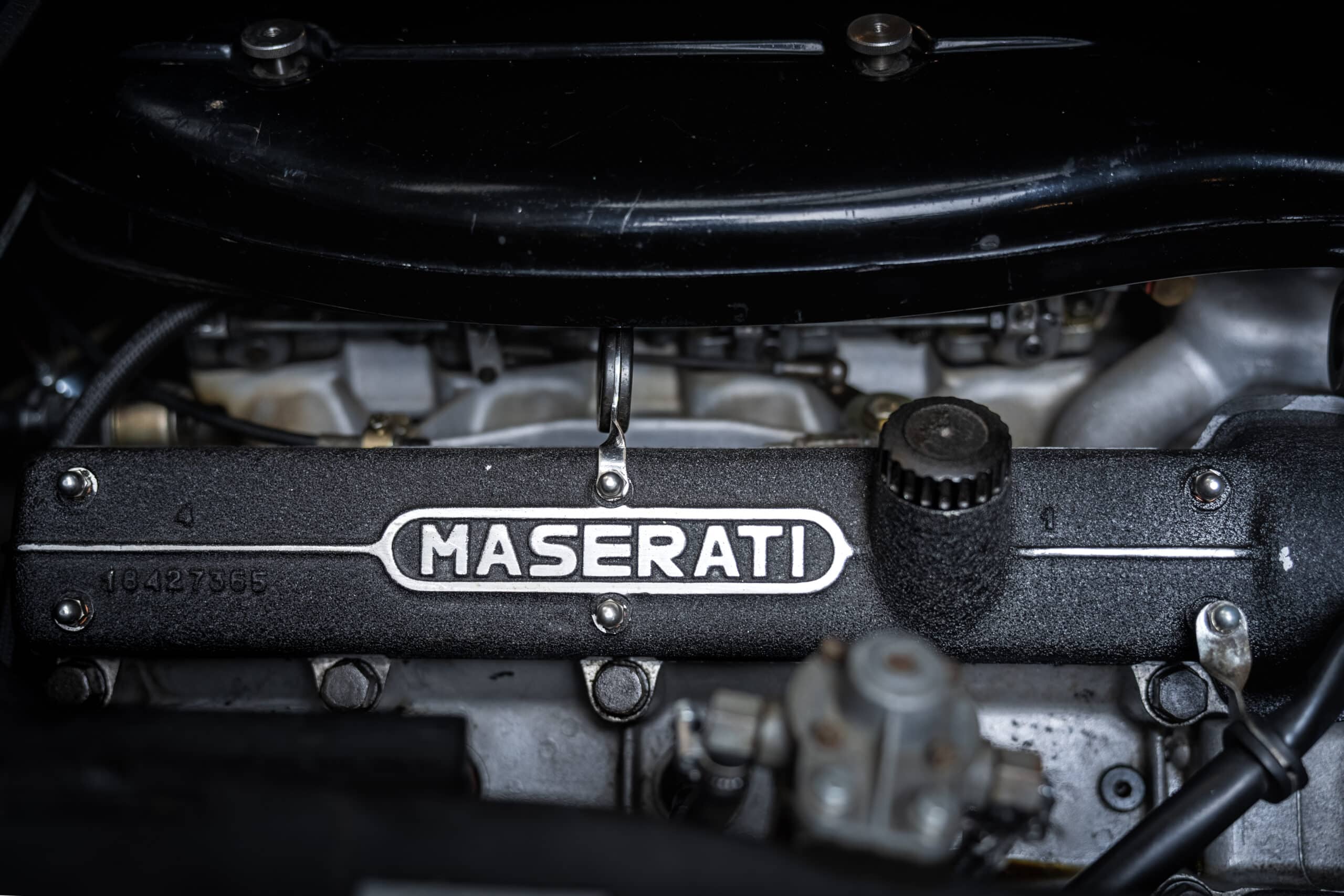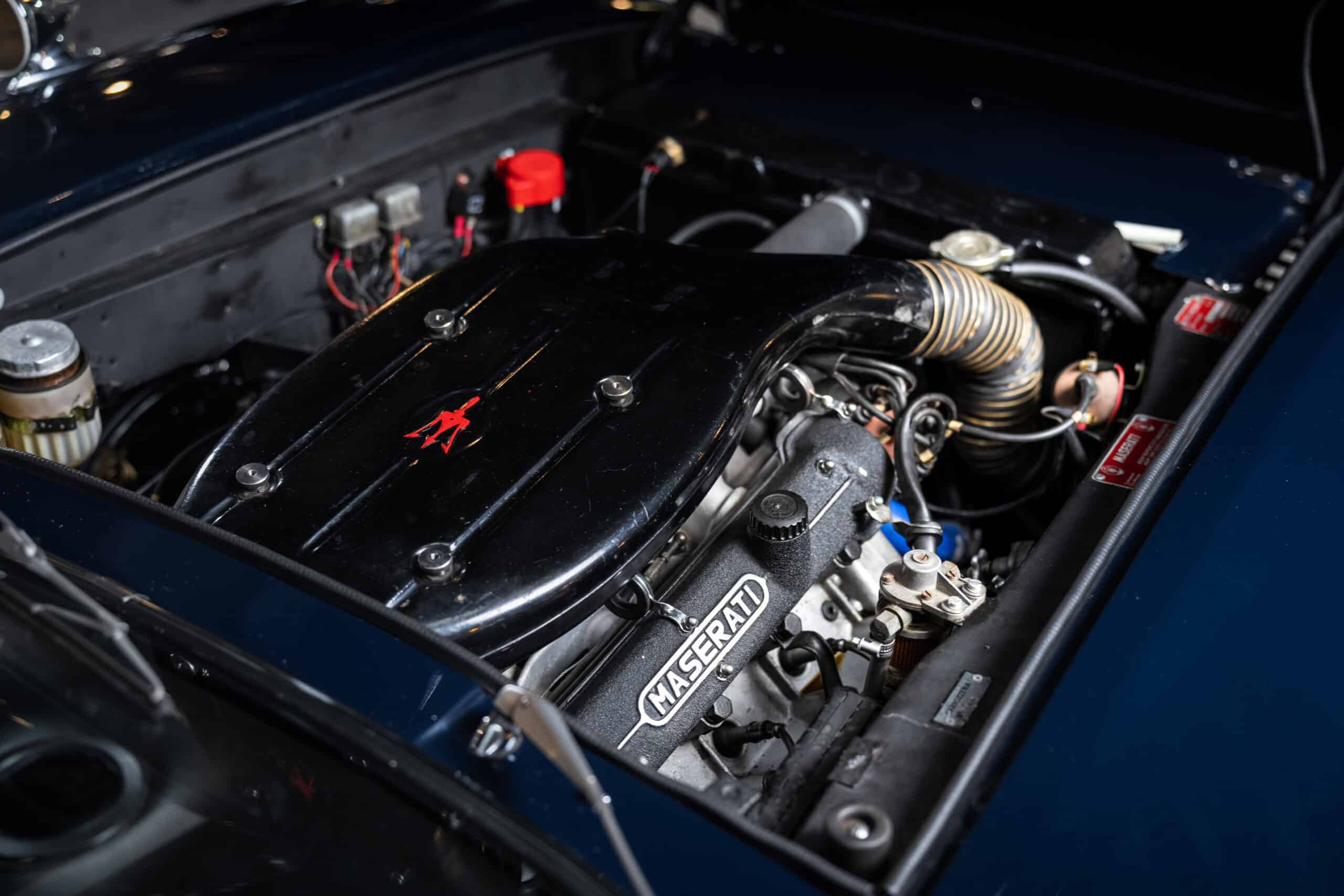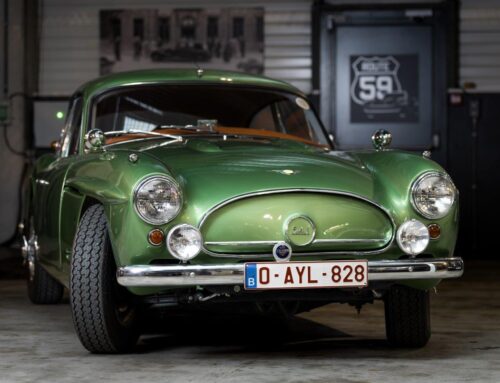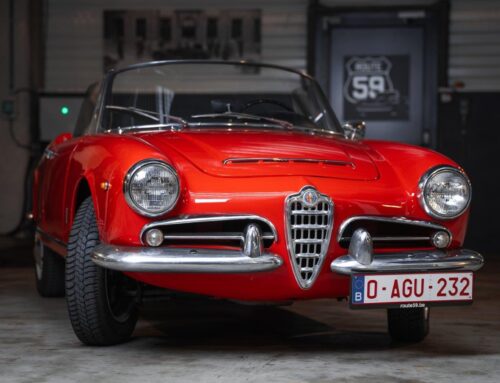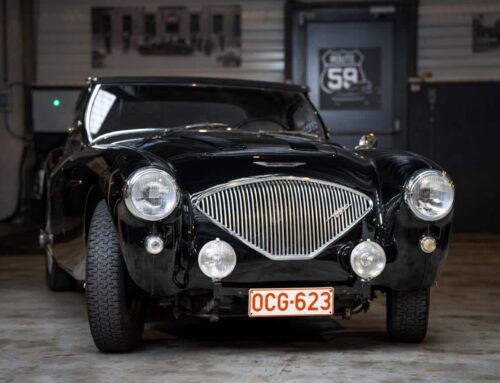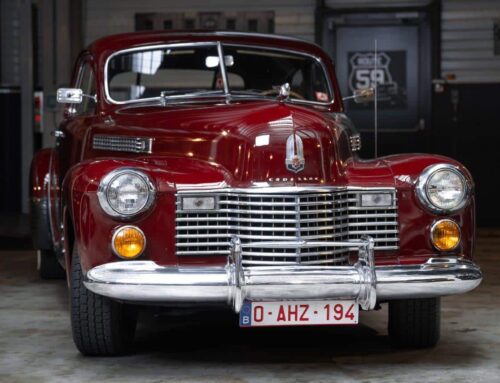Maserati Mexico 4200
| Brand | Maserati |
| Model | Mexico |
| Color | Blue |
| Transmission | Manual 5-speed |
| Pk | 260 ch |
| Year | 1970 |
| Price | Not for sale |
The Maserati Mexico made its grand entrance on October 6, 1966, at the 53rd Paris Motor Show. Designed as a successor to the Sebring, this Italian 2+2 coupé boasts generous dimensions and interior space for four passengers, a clever strategy aimed at charming the American market.
The choice of the name “Mexico” for this 2+2 coupé, unveiled in 1966, was the result of unusual circumstances during its development. In the early 1960s, an influential Mexican customer acquired a 5000 GT Allemano that had previously belonged to Mexican President Adolfo López Mateos. Following an accident, the vehicle was taken to the Modena headquarters for repairs. During his visit to the historic Viale Ciro Menotti site, the prototype of the future 2+2 coupé, still in the development phase, greatly impressed the Mexican customer, prompting him to insist on its purchase. The bodywork, designed by Giovanni Michelotti, was transferred to the chassis of his own 5000 GT (the same one, ex-Adolfo López Mateos).
After assembly of the Maserati 2+2 coupé prototype, it was unveiled on the Vignale stand at the Turin Motor Show in 1965. The origin of its chassis led to the adoption of the name “Mexico” for the production version presented the following year. In 1966, by chance, a Maserati T81 driven by John Surtees finished on pole position on the Mexico City circuit in the Formula 1 World Championship, even though Fangio was the dominant driver at the time!
Like its predecessor, the Sebring, the Maserati Mexico was designed by Vignale. This newcomer borrows certain stylistic elements from the previous coupé, notably the horizontal radiator grille featuring a trident separating two pairs of round lights. At 4.70 m long, the Mexico impresses with its dimensions and offers two comfortable rear seats, a rare feature for 2+2 coupes of the time. Its prominent rear trunk, balancing the overall aesthetic against the long engine compartment, offers generous space, ideal even for four-up travel.
With the aim of further integrating itself into the North American market and optimizing its mechanical performance, Maserati abandoned the fuel-injected in-line six-cylinder in favor of a carbureted V8 on the Mexico. Two V8 engine options were available on the 2+2 coupé: one derived from the engine of the 5000 GT (4.7 with 290 hp / Vmax of 255 km/h) and the other from the Quattroporte I (4.2 with 260 hp / Vmax of 240 km/h). The latter was more successful on the market, with 305 4.2 V8 models sold between 1966 and 1972, compared with just 175 4.7 V8 models.
To further charm Americans, the Maserati Mexico came standard with leather seats, electric windows, a wood dashboard, air conditioning and four ventilated front disc brakes. Automatic transmission, power steering and radio were available as options.
This example, originally from Germany, has been fully restored, with the exception of the interior, which is still original. With new Borrani rims and completely overhauled running gear, it offers incredible driving pleasure.


